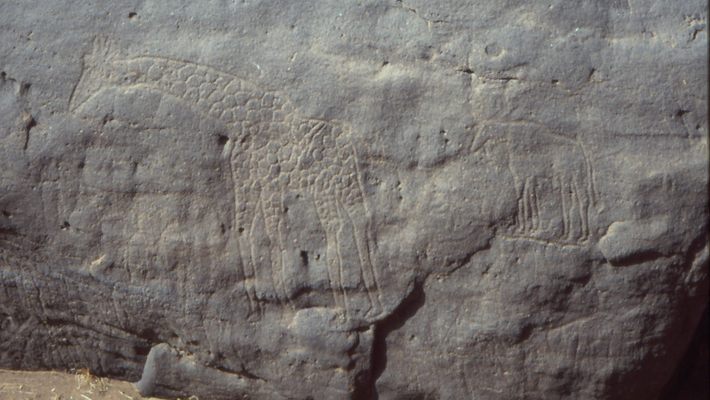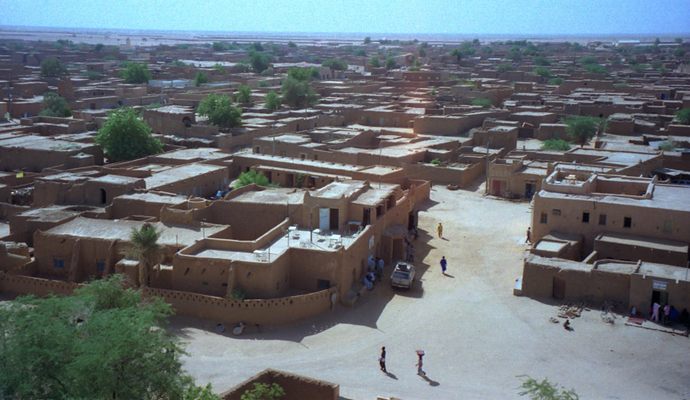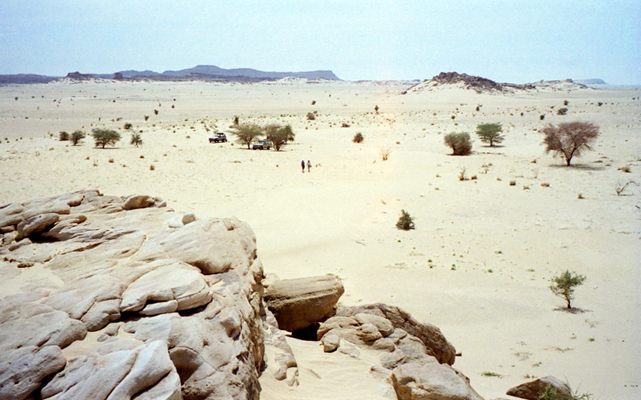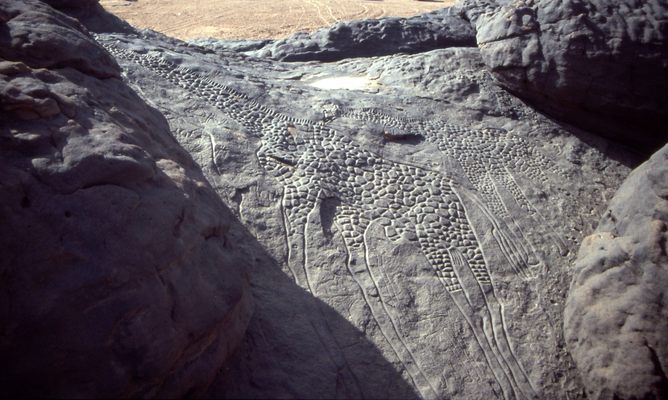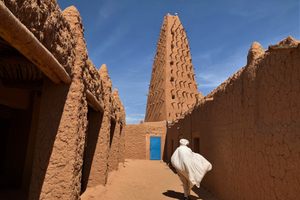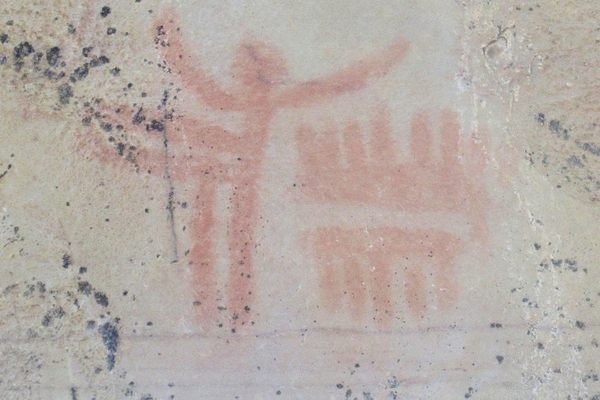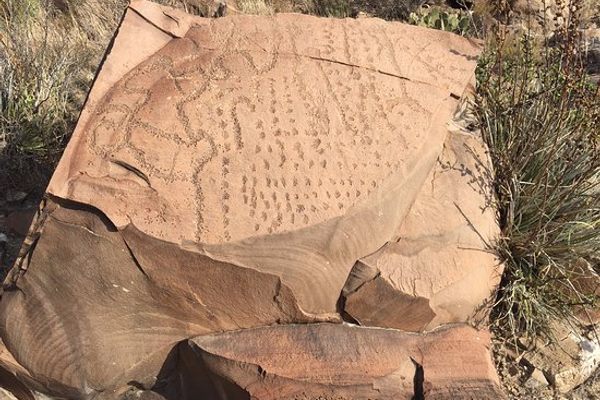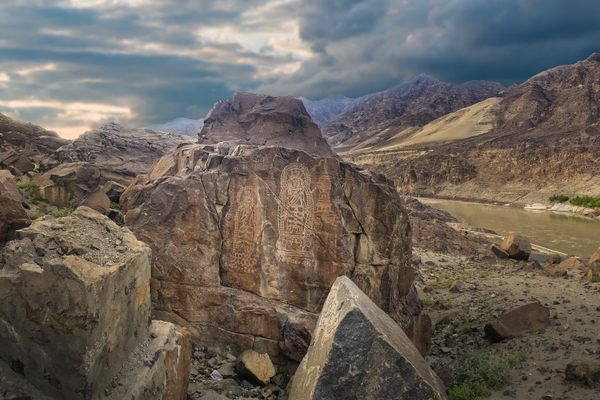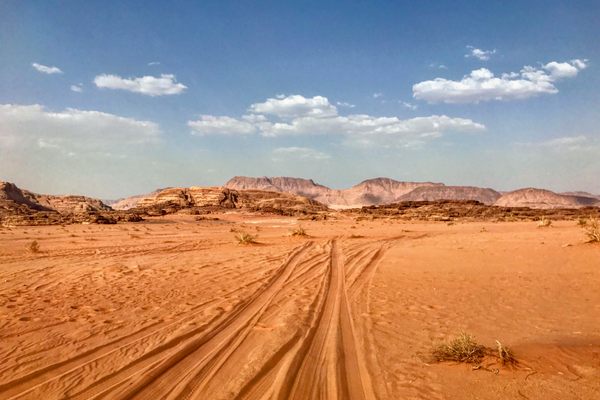About
In the heart of the Sahara lies the Tenere Desert, a flat, waterless wilderness that means “emptiness” in the Tamacheck language of the local Tuareg nomads. We are more familiar with the Arabic word with the same meaning: sahra (Sahara). On the far side of the Aïr mountains lie more than 800 petroglyphs, including an exceptional carving of two towering giraffes.
The Dabous Giraffes were first recorded by Christian Dupuy in 1987. Subsequent field trips brought more attention to the site, and more than 820 individual images have since been found engraved on rocks in the area. Around 700 of these petroglyphs represent animals, including buffalo, ostriches, antelope, lions, camels, and rhinoceros. About 60 petroglyphs represent humans, and 160 or so are open to interpretation.
But it’s the two large giraffes that are the real jewels of the collection. Believed to be between 6,000 and 8,000 years old, the pair of giraffes are engraved onto the gently sloping, weathered surface of a large sandstone rock. Various techniques were used to create them, including scraping and smoothing of certain areas, the deep engraving of the outlines, and low-relief carving of the dots all over the body, which are two to three centimeters deep. For such ancient petroglyphs, the detail is truly impressive.
Then there’s the sheer size of the carvings. The two giraffes are believed to represent a male and a female, with the larger male in front and the smaller female standing behind. The larger of the two is almost 18 feet tall (5.4 meters), or 21.4 feet tall (6.35 meters) when measured from the tip of its ears to the extremity of its hind leg. This makes it the largest petroglyph in the world, and the largest known rock carving of an animal.
Intriguingly, each giraffe also has an etched line leading down from its mouth to an engraved human figure below (something found in other ancient representations of giraffes in the Sahara). Does this perhaps represent a symbolic relationship between giraffes and humans or, more practically, ancient attempts at domestication?
Related Tags
Know Before You Go
The Dabous Giraffes and surrounding petroglyphs are located about half-way between the towns of Agadez and Arlit, on the western side of the Aïr Mountains in north-central Niger. A road runs between the two towns, and the petroglyphs are located a few miles west of the road. An aluminum cast of the giraffes, made from a mold of the carvings, stands at the airport in Agadez.
Published
December 3, 2019
